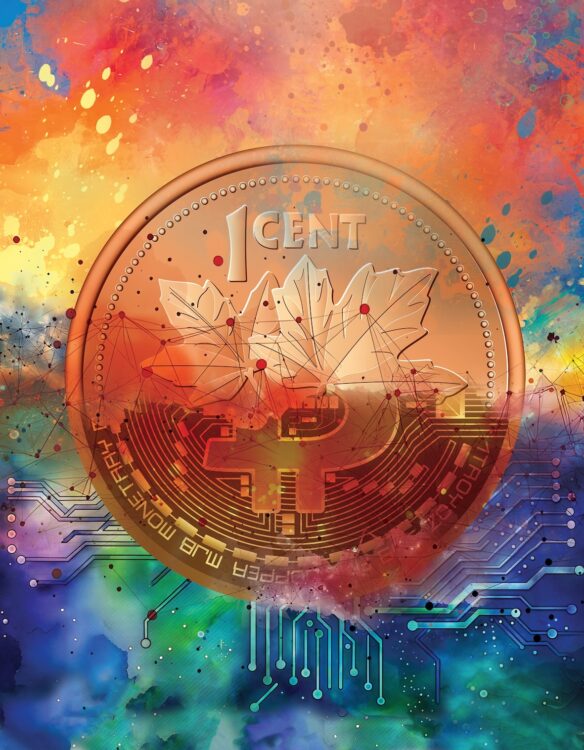Conversations
Cash
September, 2024
Why bills and coins could disappear from our monetary system
“Having the ability to pay cash is an important thing for consumers in Canada.”
As CEO of St. Albert-based Canadian Retail Solutions, Dan Holman has seen consumers take advantage of a lot of expanded options when they pay for goods and services. Debit and credit cards, whether tapped or swiped, still dominate at the checkout counter, although more and more he’s seeing people use smartphones with apps like Shopify’s Shop Pay platform and even cryptocurrency.
What Holman doesn’t see anywhere near as often is cash. Moreover, he’s noticed some retailers even refuse cash in favor of more electronic alternatives.
“Really, that’s not an appropriate way to do business. Cash is still legal tender and shouldn’t be refused. But we’re seeing it in all kinds of resell markets, whether that’s retail, food and beverage, food truck, where they’re saying no cash is allowed.”
Dan Holman
Faster Transition
Most retailers still welcome loonies, toonies, and bank notes, but the stats argue that high-tech methods are eclipsing the traditional method of forking over the dough. It’s also happening faster than previously predicted. Nearly a decade ago, Moneris Solutions Corporations prophesied that cash would make up only 10 percent of financial transactions by 2030. However, a study commissioned by the Bank of Canada in 2023 revealed that we had already hit that mark, a considerable tailspin from the 54-percent level reported in 2009, arguably the last time cash reportedly dominated financial transactions.
But if anyone’s worried that cash is no longer king, Holman hasn’t noticed. “We are not seeing concern in a migrational way towards a cashless society,” he said. “We’re actually seeing a reduction of that. As retail technology advances, and we’re seeing more and more online connected business, we’re even seeing online payment applications appearing in physical stores now.”
More up-in-arms over that shift, however, is the Bank of Canada, which claimed in a 2023 study that 80 percent of Canadians had no desire to part with cash. Despairingly, its research determined that a gravitation towards a cashless economy would continue to disenfranchise vulnerable, low-income citizens who still rely on physical currency.
“For many—such as Indigenous peoples, unhoused individuals, older Canadians, victims of domestic abuse and others who are vulnerable—cash is a beacon of economic security, a source of financial autonomy, an emergency lifeline and an emblem of cultural traditions,” said Aftab Ahmed in Policy Options, a digital magazine published by the Institute for Research on Public Policy.
–

–
Cash Still Significant
Stacy Yanchuk Oleksy, CEO of Money Mentors, a not-for-profit association that advises clients on how to handle debt, believes cash still has a significant role in Canada’s financial system.
“I think it’s important that we have a society that accepts cash, because not everybody has online access to online banking. Having the ability to pay cash is an important thing for consumers in Canada.”
Stacy Yanchuk Oleksy, CEO of Money Mentors
Tangentially, a 2023 poll involving 1,500 participants conducted by Payments Canada, an association that operates and regulates the country’s transaction infrastructure, revealed that 55 percent of respondents said they had no plans to go totally cashless, while only 13 percent reported they’ve totally transitioned away from physical currency.
“As we continue to see more payment innovations evolve, such as digital ID, buy now, pay later and open banking, there’s no doubt we’ll see further shifts in how Canadians choose to pay and get paid,” noted Jon Purther, Payments Canada’s director or research. “But for now, Canadians value the use of cash, including holding it for emergency purposes.”
Defenders of cash proclaim the old tried-and-true transaction method isn’t hampered by bank fees, privacy issues, and days when computer systems crash around the planet. “When there are those outages or issues, it becomes really problematic when you don’t have any ability to pay,” added Yanchuk Oleksy.
Independents Struggling
On the retailer side of the equation however, Holman has noticed independent businesses struggle to keep pace with more advanced transaction methods than their chain counterparts.
In today’s world, as technology is moving so fast, it’s putting a burden on that retailer to move at the speed that technology is moving.
Dan Holman
“In an independent world, that can certainly be challenging. If we look inside our local community, here in greater St. Albert or greater Edmonton, there’s a much larger force behind independent retail than there is corporate retail. And it’s those independent retailers that have to come to terms with the advancements in technology.”
According to Holmon, it’s only a matter of time before they catch up, especially as customers continue to drive the changes by adopting newer ways of purchasing items. “Think about cash and the reconciliation of cash and how easy it is for cash to go missing; there is some comfort that that’s being removed,” he said. “The more we adopt where the consumer is more comfortable spending, the easier it is for us to move the needle in our business.”
Pandemic Acceleration
Both Holman and Yanchuk Olesky agree that a huge leap towards a cashless future took place during the pandemic, where lockdowns and quarantine directives drastically reduced face-to-face expenditures at points of purchase. During that period, Statistics Canada reported that online ordering between 2020 and 2022 jumped by 67.9 percent.
But if COVID-19 accelerated the use of electronic transactions, a few holdouts are preventing a total transition away from cash from being realized, at least for now. According to the Bank of Canada, seniors, especially those lacking easy access to credit, are least likely to abandon cash, having grown up with physical currency. But with subsequent generations far more eager to embrace newer transaction technology, the clock might be ticking on bills and coins.
“At some point, I hope it’s not soon, because we have to deal with the issues that come up with a cashless society,” said Yanchuk Olesky. “If we address those issues, then my sense is that we would probably head towards a completely cashless society.”
CASH FACTS
Payments Canada’s 2023 poll surveying 1,500 participants revealed additional facts about the use of cash:
TOP USES OF CASH
- Purchases of $20 or less (70%)
- Restaurant, taxi and hotel tips (55%)
- Paying back borrowed money (38%)
- Sending a cash gift (28%)
- Charitable donation (19%)
- “Under-the-table” purchases (15%)
- Child allowances (14%)
BIGGEST REASONS TO USE CASH
- It’s fast (38%)
- It’s still widely accepted (38%)
- Folks can use their own funds instead of borrow (25%)
- Easier to keep track of expenses (21%)
- Protects anonymity in transactions (21%)
- More convenient (20%)
- Easier to budget (20%)
- Cheaper than other methods (16%)
- More secure than other methods (15%)
BIGGEST FRUSTRATIONS WITH CASH
- Retailers don’t accept large denominations (27%)
- Can’t make online purchases (26%)
- Hard to recover lost or stolen cash (22%)
- Less convenient than cards (16%)
- Fewer bank branches or ATMs nearby (12%)
- Feel more “spend guilt” when using cash (10%)













